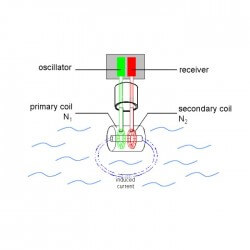Conductivity Electrode / Sensor & Instrument Selection Guide
Conductivity is a measure of the ability of a fluid to conduct an electrical current. In water this ability is due to the presence of various ionized substances in solution. Conductivity measurements usually include temperature compensation.

To help you choose the right conductivity electrode and sensor electronics for your specific liquid applications needs, follow these recommended steps.
Step 1: Determine Application Requirements
Defining the following variables before building your system will ensure peak performance from your Selected conductivity sensors, electrodes and instruments.
• Conductivity measurement range
• Installation requirements
• Pipe size and material
• Chemical compatibility of all wetted parts to process chemicals
• Hazardous location requirements
• Conductivity system specifications (such as temperature and pressure)
• Performance requirements of conductivity sensor or electrode
• Fluid particulates
• Viscosity of fluids
Step 2: Select Conductivity Sensor/Electrode Technology
Based on the application requirements, choose a conductivity sensor or electrode. Then, determine your signal output requirement to allow you to match the right instrument.
Step 3: Choose Conductivity Instrument (Transmitter, Controller, Monitor etc)
Choose a conductivity/resistivity or multi-parameter instrument depends on your needs. All units are available in 1/4 DIN panel or field configuration and are available with digital, analogue, or analogue/digital display. Various retrofit adapters and mounting accessories are also available.
Step 4: Determine Installation Requirements
We offer a wide selection of installation fittings to suit the select conductivity insertion sensor and electrodes. These fittings are specifically designed to ensure the proper placement of the sensor or electrode in the system to achieve accurate readings.
Learn the example of flip-flop PLC program for lamps application using the ladder logic to…
In this article, you will learn the STAR DELTA programming using PLC controller to start…
Lube oil consoles of rotary equipment packages in industrial process plants are usually equipped with…
Rotating equipment packages such as pumps, compressors, turbines need the lube oil consoles for their…
This article explains how to blink lights in ladder logic with a detailed explanation video…
In this article, a simple example will teach you the conversion from Boolean algebra to…